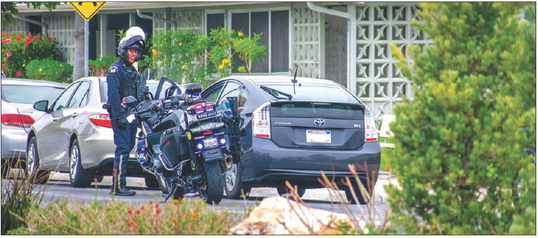Tax Tips for Seniors
Current research by the Internal Revenue Service indicates that individuals are likely to make errors when preparing their tax returns.
The IRS has the following tax tips to help you avoid some of the common errors dealing with the standard deduction for seniors, the taxable amount of Social Security benefits, and the Credit for the Elderly and Disabled. Find links to helpful publications as well as information on how to obtain free tax assistance at https://www.irs.gov/individuals/ seniors-retirees/tips-for-seniorsin- preparing-their-taxes. Standard Deduction for Seniors
If you do not itemize your deductions, you can get a higher standard deduction amount if you and/or your spouse are 65 years old or older. You can get an even higher standard deduction amount if either you or your spouse is blind. (See Form 1040 and Form 1040A instructions.) Taxable Amount of Social Security Benefits When preparing your return, be especially careful when you calculate the taxable amount of your Social Security. Use the Social Security benefits worksheet found in the instructions for IRS Form 1040 and Form 1040A, and then double-check it before you fill out your tax return. See Publication 915 PDF, Social Security and Equivalent Railroad Retirement Benefits.
Credit for the Elderly or Disabled You must file using Form 1040 or Form 1040A to receive the Credit for the Elderly or Disabled. You cannot get the Credit for the Elderly or Disabled if you file using Form 1040EZ. Be sure to apply for the credit if you qualify.
Who Can Take the Credit
The credit is based on your age, filing status and income. You may be able to take the credit if:
•Age: You and/or your spouse are either 65 years or older; or under age 65 years old and are permanently and totally disabled.
Filing Status: Your income on Form 1040 line 38 is less than $17,500, $20,000 (married filing jointly and only one spouse qualifies), $25,000 (married filing jointly and both qualify), or $12,500 (married filing separately and lived apart from your spouse for the entire year).
And the nontaxable part of your Social Security or other nontaxable pensions, annuities or disability income is less than $5,000 (single, head of household, or qualifying widow/er with dependent child); $5,000 (married filing jointly and only one spouse qualifies); $7,500 (married filing jointly and both qualify); or $3,750 (married filing separately and lived apart from your spouse the entire year).
Calculating the Credit
Use Schedule R PDF (Form 1040 or 1040A), Credit for the Elderly or Disabled, to figure the amount of the credit. See the instructions for Schedule R PDF (Forms 1040 or 1040A) if you want the IRS to figure this credit for you.
Also see Publications 524 PDF (Credit for the Elderly or Disabled) and 554 PDF (Tax Guide for Seniors).
For more information on free tax help, visit https://irs.treasury. gov/freetaxprep/ and enter your ZIP code.



